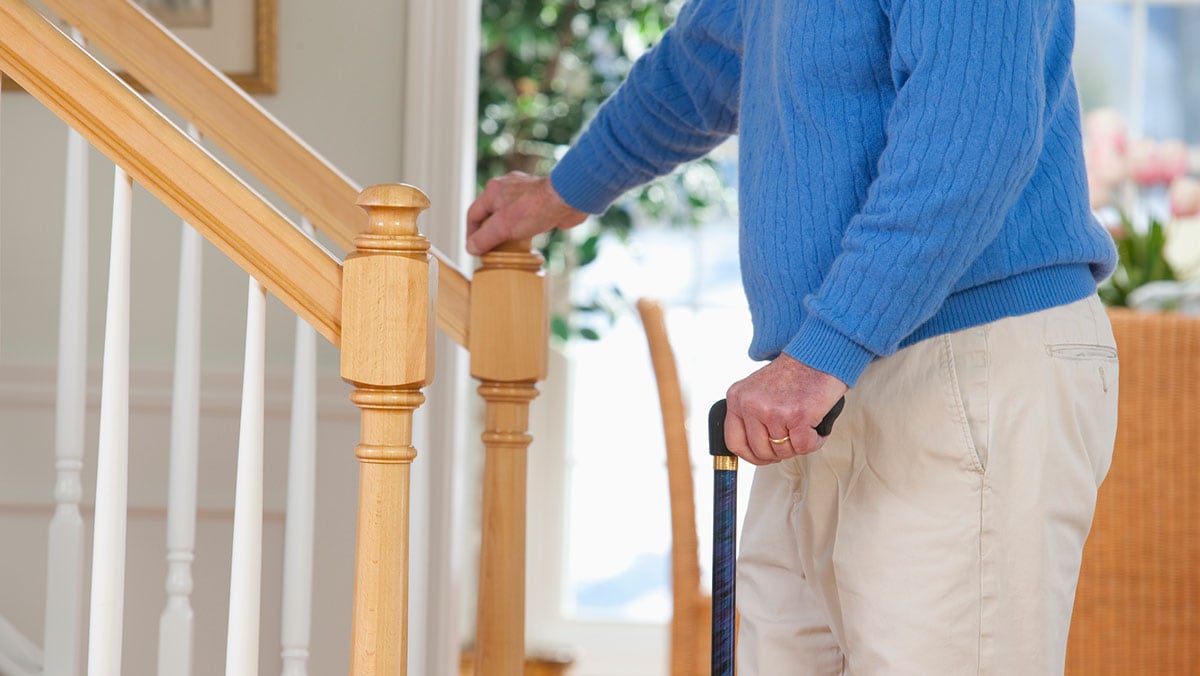Key points
- Millions of Americans over 40 have vision impairment, with increasing numbers as the population ages.
- Each year, 1 in 4 Americans over 65 has a fall, the leading cause of injury among older adults.
- Falls can often be prevented by protecting vision.

Know the risk
Older adults with impaired vision or who are at risk for vision impairment often have other chronic conditions. These may include diabetes, stroke, and heart disease, which also increase the risk of falling. In addition, some medicines taken for these conditions have side effects like dizziness and muscle weakness, which can increase fall risk.
Older adults with vision impairment can also be socially isolated. They may take on physical tasks they can't easily perform alone, increasing the risk of falls and injury. They may also have trouble getting help if they do fall.
Preventing falls
Falling and vision impairment are among the most common fears for older adults, but they can be prevented. You can reduce your risk by following these prevention strategies, and slowing the progression of vision impairment.

Do exercises to improve your strength and balance like yoga, tai chi, or strengthening exercises.
Wear sturdy, nonslip footwear that fits correctly to help with balance and mobility.
Get a dilated eye exam at least once a year. This reduces the risk of irreversible vision loss, and if you wear glasses, it assures your prescription is up to date.
Talk to your doctor about evaluating your risk for vision impairment and falls. Ask if any of your medicines could cause side effects, like drowsiness or dizziness, that increase your fall risk.
Make your home safer:
- Remove throw rugs or use double-sided tape to keep them from causing you to slip or trip.
- Make sure all rooms and hallways have good lighting, with easily accessible switches or motion sensor lights.
- Install handrails on stairs and grab bars in the bathroom/shower.
- Varma R, Vajaranant TS, Burkemper B, et al. Visual impairment and blindness in adults in the United States: demographic and geographic variations from 2015 to 2050. JAMA Ophthalmol. 2016;134(7):802–809.
- National Academies of Sciences, Engineering, and Medicine. Making Eye Health a Population Health Imperative: Vision for Tomorrow. National Academies Press; 2016.
- Crews JE, Chou CF, Stevens JA, Saaddine JB. Falls among persons aged ≥65 years with and without severe vision impairment—United States, 2014. MMWR Morb Mortal Wkly Rep. 2016;65(17):433–437. doi: 10.15585/mmwr.mm6517a2
- Kachroo S, Kawabata H, Colilla S, et al. (2015). Association between hypoglycemia and fall-related events in type 2 diabetes mellitus: analysis of a US commercial database. J Manag Care Spec Pharm. 2015;21(3):243–253. doi: 10.18553/jmcp.2015.21.3.243
- Bergen G, Stevens MR, Burns ER. Falls and fall injuries among adults aged ≥65 years—United States, 2014. MMWR Morb Mortal Wkly Rep. 2016;65(37):993–998. doi: 10.15585/mmwr.mm6537a2
